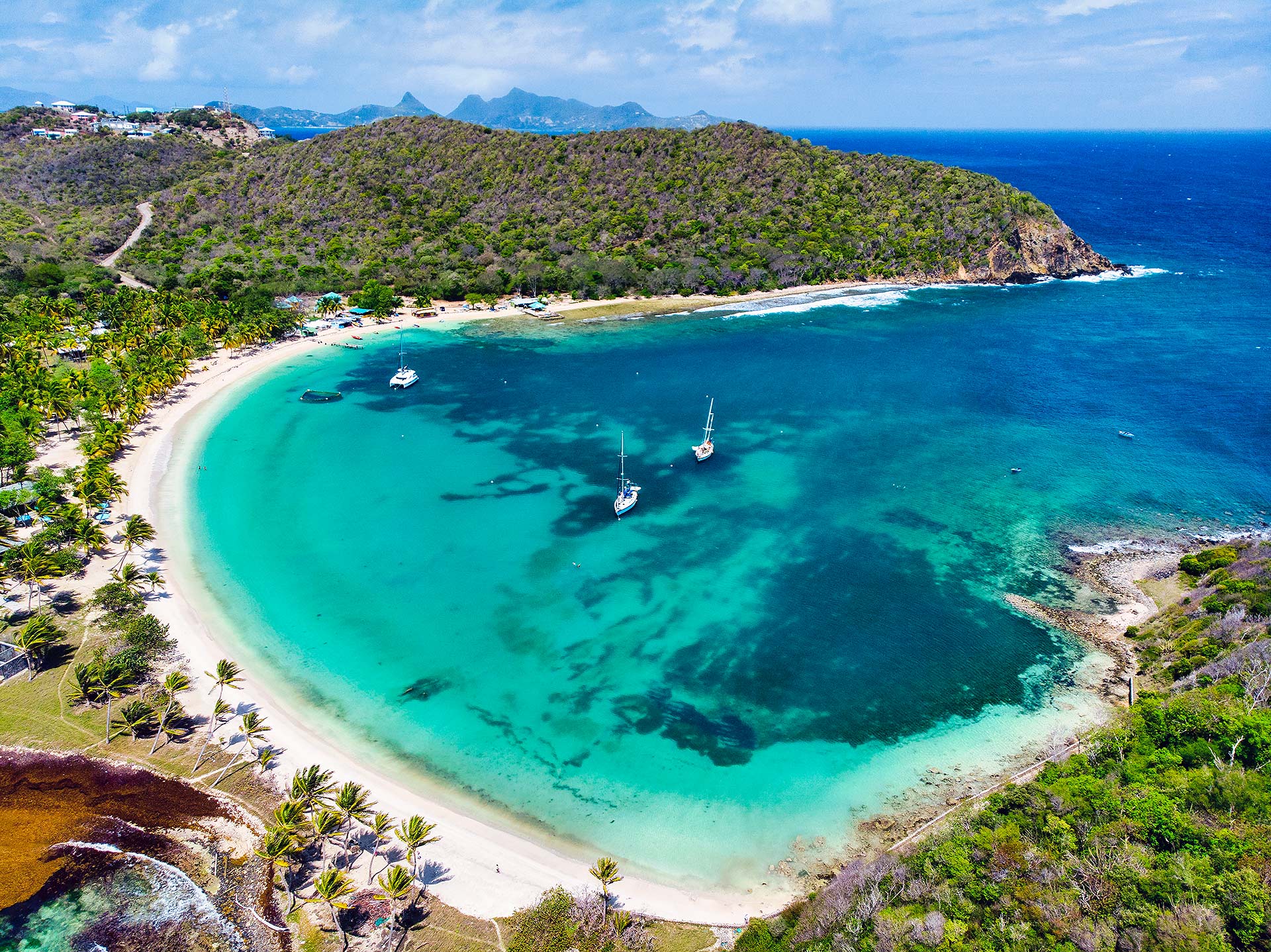Geography of the Windward Islands
:max_bytes(150000):strip_icc()/aerial-shot-of-cruz-bay-st-john-in-us-virgin-islands-165581255-58dea04e3df78c5162cf9584.jpg)
The Windward Islands are a group of islands in the Caribbean Sea, located to the east of the Greater Antilles and south of the Leeward Islands. The islands are part of the Lesser Antilles, and are divided into two groups: the northern group, which includes Guadeloupe, Dominica, Martinique, and Saint Lucia; and the southern group, which includes Saint Vincent and the Grenadines, Grenada, Barbados, and Trinidad and Tobago.
De Windward Islands dem a group a islands weh deh inna de Caribbean Sea. Dem a part a de Lesser Antilles, and dem lie between de islands a Guadeloupe and Grenada. De islands dem get dem name from de direction a de wind weh does blow.
De Windward Islands dem get hit by hurricanes often, and one a de most famous hurricanes weh hit de islands dem was de Barbados hurricane a 1955. De hurricane kill more dan 100 people and cause a lot a damage.
De Windward Islands dem still a recover from de hurricane today.
The Windward Islands are generally mountainous, with lush vegetation and tropical climates. The islands are also home to a number of active volcanoes, including Mount Pelée on Martinique and La Soufrière on Saint Vincent. The islands are surrounded by coral reefs, which provide excellent snorkeling and diving opportunities.
Di Windward Islands, wey dey Caribbean Sea, dem dey always sidon fear-fear during hurricane season. Dem dey check di national hurricane center beryl everyday, to know if any storm dey come dia way. Di islands dey low and flat, so even small storm fit cause big damage.
Di people dem dey pray make hurricane no come dia way dis year.
Major Islands
The following table lists the major islands of the Windward Islands, along with their size and topography:
| Island | Size (sq km) | Topography |
|---|---|---|
| Guadeloupe | 1,703 | Mountainous, with lush vegetation |
| Dominica | 751 | Mountainous, with rainforests and waterfalls |
| Martinique | 1,128 | Mountainous, with active volcanoes |
| Saint Lucia | 616 | Mountainous, with lush vegetation |
| Saint Vincent and the Grenadines | 389 | Mountainous, with active volcanoes |
| Grenada | 344 | Mountainous, with lush vegetation |
| Barbados | 430 | Flat, with rolling hills |
| Trinidad and Tobago | 5,128 | Mountainous, with rainforests and swamps |
The following map shows the location and layout of the Windward Islands:
History and Culture of the Windward Islands
The Windward Islands, a chain of islands in the Caribbean Sea, boast a rich and diverse history and culture. From their pre-colonial era to the present day, the islands have been shaped by various influences, leaving a vibrant tapestry of traditions, customs, and heritage.
During the pre-colonial period, the Windward Islands were inhabited by indigenous peoples, including the Caribs and Arawaks. These communities had their unique cultures, languages, and social structures. With the arrival of European explorers and colonizers, the islands’ history took a dramatic turn.
European Colonization and the Slave Trade
Beginning in the 15th century, European powers, particularly France and England, began colonizing the Windward Islands. The islands became important hubs for the transatlantic slave trade, with millions of enslaved Africans being brought to the islands to work on sugar plantations.
The slave trade had a profound impact on the Windward Islands. It introduced a new population group, the descendants of enslaved Africans, who played a crucial role in shaping the islands’ culture, society, and economy.
Independence and Modern History
In the 20th century, the Windward Islands began to gain independence from their European colonizers. Grenada, Saint Vincent and the Grenadines, Dominica, and Saint Lucia all achieved independence in the 1970s and 1980s.
Today, the Windward Islands are independent nations with their unique political, economic, and cultural identities. However, the legacy of their colonial past and the contributions of diverse population groups continue to shape their present-day societies.
Tourism and Economic Activities in the Windward Islands

The Windward Islands economy is heavily dependent on tourism, which is a major source of revenue and employment for the region. The islands offer a variety of attractions and activities that draw tourists from all over the world, including pristine beaches, lush rainforests, and vibrant coral reefs.
Tourism Attractions and Activities, Windward islands
* Beaches: The Windward Islands are renowned for their beautiful beaches, with white sand, clear turquoise waters, and swaying palm trees.
* Rainforests: The islands are home to lush rainforests, which offer opportunities for hiking, birdwatching, and wildlife viewing.
* Coral Reefs: The Windward Islands are surrounded by coral reefs, which are home to a diverse array of marine life. Snorkeling and scuba diving are popular activities for tourists.
* Culture and Heritage: The Windward Islands have a rich cultural and historical heritage, which is reflected in their music, dance, and cuisine.
* Adventure Activities: The islands offer a variety of adventure activities, such as zip-lining, kayaking, and windsurfing.
Other Major Economic Activities
In addition to tourism, other major economic activities in the Windward Islands include:
* Agriculture: The islands produce a variety of agricultural products, including bananas, sugar cane, and spices.
* Fishing: The Windward Islands have a strong fishing industry, which provides both food and income for the region.
* Manufacturing: The islands have a small manufacturing sector, which produces a variety of goods, including textiles, electronics, and pharmaceuticals.